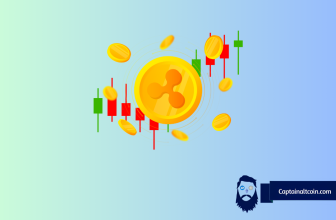Bitcoin vs. Litecoin. Which cryptocurrency is better? Everyone from Redditors to qualified economists have been comparing these two cryptocurrencies since Litecoin was launched in 2011.
The discussion not only discusses Bitcoin and Litecoin individually and against each other, but also pertains to a more complex debate over what it takes for a cryptocurrency to become successful.
Bitcoin was launched in 2009 by Satoshi Nakamoto as the world’s first crypto-currency, and is the clear poster-child for the crypto-community. However, Litecoin has developed a user base from those who strongly believe in the future of cryptos but are sceptical of some aspects of Bitcoin.
Bitcoin and Litecoin have some slight technical differences. However, they both set out to accomplish the same thing: transfer value using cryptographic principles. Yet once the two coins face off, it becomes clear why Bitcoin has come out as the winner in this battle.
What you'll learn 👉
History of Bitcoin
In 2009, Bitcoin was launched by Satoshi Nakamoto as the world’s first crypto-currency and it became an imperative name in cryptocurrency. The code is open source. This means that it can be freely modified by anyone and used for other projects.
It no longer enjoys an 80% or more share of the industry’s market capitalization as it did through the beginning of this year. However, it still remains the largest digital currency by share of market cap.
History of Litecoin
Litecoin was created in 2011 by Charles Lee, a Google engineer, and it was actually one of the first forks of Bitcoin. Charlie Lee was a former Google employee and created Litecoin when he got into cryptocurrency with the aim of being the silver to Bitcoin’s gold.
Bitcoin vs. Litecoin: Key Information
|
Cryptocurrency |
|
|
BITCOIN |
|
LITECOIN |
|||||
|
|
|
|
|
|||||||
| Launch Date | January 3rd, 2009 | October 7th, 2011 | ||||||||
| Creator | Satoshi Nakamoto | Charles Lee | ||||||||
| Max Total Coins | 21,000,000 | 84,000,000 | ||||||||
| Protocol | Proof-of-Work (PoW) | Proof-of-Work (PoW) | ||||||||
| Algorithm | SHA-256 | Scrypt | ||||||||
| Average Block Time | 10 Minutes | 2.5 Minutes | ||||||||
| Block Halving | Every 210,000 Blocks | Every 840,000 Blocks | ||||||||
Cryptocurrencies can be compared from many angles. However, the most popular method is looking at their market capitalization. Market Cap is essentially the amount of Fiat money (usually in US dollars) currently invested into a cryptocurrency. Bitcoin is currently ranked number one with a market cap of over $56 billion. On the other hand, Litecoin is ranked fifth with a market cap of $2.56 billion. Throughout the history of the cryptocurrency industry, Bitcoin has remained the dominant player, and it is the standard cryptocurrency that most users and platforms prefer. So why are we talking about Litecoin? Its market cap may be a tiny sliver of cake compared to Bitcoin’s $45 billion. However, Litecoin is one of the few altcoins with an active user base and legitimate credentials.
(Check the table above to view current market caps and see how they’ve changed since this article was written.)
Litecoin is often compared to Bitcoin – Litecoin is an online payment system that uses cryptocurrency instead of a national currency. As cryptocurrencies, they both rely on similar cryptographic principles, and they both garner a similar community and image.
Bitcoin was released in 2009 as the world’s very first cryptocurrency. Litecoin was launched only two years later in 2011. However, it has been sprinting to catch up to Bitcoin ever since.
Litecoin tech is arguably better than Bitcoin’s. However, the problem is that it was born inferior.
Bitcoin vs. Litecoin: At Depth
The two cryptocurrencies may seem similar. However, they are actually quite distinct in their technical mechanics and market acceptance.
We will discuss what makes each crypto distinct in the following four points and you will come to understand how Litecoin’s arguably superior algorithm will likely forever be subordinate due to Bitcoin’s pervasive network.
- Bitcoin is Much More Popular Than Litecoin
With a market cap roughly 22.5x the size of Litecoin’s, Bitcoin remains the most highly rated player by far in the cryptocurrency market and its overwhelming popularity makes it the obvious choice for the crypto investment community. The current figure seems to be mind-boggling, because in the year 2010, Bitcoin’s market capitalization was merely $42,000.
Since cryptocurrencies are viewed as inherently risky, with its extremely high market cap Bitcoin seems relatively stable. Sure, Bitcoin’s price can still be incredibly volatile, but while a mere $1 billion loss would decimate Litecoin’s market cap in half, Bitcoin would need a crash of $40 billion in market cap for effects to be just as catastrophic.
Despite all this, Litecoin has made good progress in recent years and is still fairly relevant in the crypto community. Based on its market capitalization and public interest, Litecoin seems warranted.
- Litecoin’s Cryptographic Algorithm Welcomes Beginners
The most obvious difference between these cryptocurrencies is the Proof-of-Work algorithm.
The algorithm that Bitcoin uses is the SHA-256 algorithm while Litecoin makes use of a new algorithm, which is known as Scrypt. This algorithm has similar features to SHA-256, but Scrypt has a more serialized calculations.
SHA-256 is considered to be a more complicated algorithm than Scrypt, which therefore allows for a higher degree of parallel processing. Bitcoin miners have built sophisticated methods to mine Bitcoins at a highly efficient rate, and the most dominant method uses ASICs (Application-Specific Integrated Circuits). ASICs are essentially hardware systems created purely to mine Bitcoins.
The Bitcoin competition for mining is fierce due to technical innovations such as the ASICs, as well as the sheer amount of miners. New miners struggle to establish themselves without capital to handle expenses, adequate computing power, and the know-how to outcompete experienced competition.
Litecoin was created by Charlie Lee, an MIT graduate and former Google engineer, to appeal to miners who could no longer mine Bitcoin because their CPUs couldn’t compete with ASICs. Scrypt is more accessible for new miners, and it was designed to be less conducive to custom hardware solutions such as in ASIC-based mining. Scrypt, however, is not immune to the innovation. There is increasingly development that hinders the easy-access mining Scrypt was partially designed for. It’s important to note that many companies have recently brought Scrypt to the market, suggesting that it ensures easy accessible mining.
One more thing worth noting is that mining Litecoins requires less resources and energy compared to Bitcoins. Considering that there is already a shortage of powerful graphics cards needed for mining rigs and that mining operations around the world take up massive amounts of electricity, this could prove to be a major advantage for Litecoin miners going forward.
- Litecoin Has a Faster Transaction Processing Speed
Bitcoin’s average transaction confirmation time is a little over 9 minutes per transaction. On the other hand, Litecoin was especially designed to be much faster than Bitcoin and its transaction speed is roughly 2.5 minutes per transaction. This means that transactions involving Litecoin will be confirmed four times faster than those for Bitcoin. This offers an attractive advantage for users who frequently conduct transactions, such as merchants.
It’s important to note that transactions technically occur instantaneously on both Bitcoin and Litecoin networks. However, the transaction confirmation by other network participants does take some time. Waiting 2.5 minutes for a Litecoin transaction or the full 9 minutes for a Bitcoin transaction ensures the transaction was valid. Merchants can accept the transactions instantaneously without waiting for a confirmation. However, by doing this they run the risk of becoming victim to a “double spend” attack.
However, it is important to remember that this seemingly large advantage Litecoin has over Bitcoin is minimized by third-party solutions that make instantaneous transactions more secure.
- Litecoin Accommodates More Total Coins
Another major difference is the total number of coins each cryptocurrency is programmed to make.
The Litecoin network cannot exceed 84 million coins. This is four times higher than the total number of Bitcoins that can be mined (Bitcoin is capped at 21 million coins), which means that as demand increases, there will be a larger supply of Litecoins to meet it, at least initially.
Both coins technically still have a long ways to go until they hit their cap limits. However, it remains a concern because of the price volatility expected as the coins reach their maximums. Litecoin currently has roughly 54,2 million coins in circulation, and Bitcoin has about 16,7 million. This means that Litecoin is currently about 61% of its maximum, and Bitcoin is at 78% of its maximum. Theoretically speaking, if Bitcoin nears its maximum coin amount first, then Litecoin may pick up more traction with traders purchasing into Litecoin in order to avoid the Bitcoin volatility.
However, the above point in favor of Litecoin is largely a misunderstanding. The maximum coin shouldn’t impact the value storage of either coin since both Bitcoin and Litecoin can be divided into fractional amounts.
Exchanges
Every crypto exchange supports Bitcoin, which means that Bitcoin is by far the easiest cryptocurrency to buy. Most exchanges support Litecoin, but not all. Coinbase, the world’s largest Bitcoin broker, recently added Litecoin. <this made it very easy for Americans, Canadians, Australians, and Europeans to buy LTC with a bank account or a credit card.
However, the main issue for LTC is that it is very difficult to purchase Litecoin with cash. Wall of Coins, BitQuick, and LocalBitcoins are the biggest cash to Bitcoin exchanges and neither one of them supports Litecoin.
Bitcoin is the Crowned King Thanks to Its Network
Litecoin’s efforts to make mining more accessible to everyone are a notable gesture that speaks volumes about the Litecoin community. However, it also pigeonholes itself into a niche. Litecoin focused on minor differentiating factors instead of appealing to a massive community of people to achieve a network to contend with Bitcoin’s. Litecoin doesn’t offer enough for users to convert from Bitcoin because it essentially functions the same as Bitcoin.
It’s safe to assume that most crypto-traders aren’t valuing tech over substantial profit. Those adopters who are less comfortable with technology hardly know what the mining process is like, let alone the difference between Scrypt and SHA-256, and Litecoin’s value proposition simply sounds like another altcoin pitch to them. So, Litecoin’s price simply isn’t as attractive as Bitcoin’s, although it has increased significantly over the past few months.
Litecoin additionally took a hard jab in the gut in early 2017, when Ethereum exploded onto the scene. Ethereum has developed nearly 10x that of Litecoin’s market cap in a short amount of time, and knocked Litecoin down to the #4 market cap position. Bcash fork and most recently, in this week IOTA pushed it further down to number 6 in overall market cap.
Conclusion
Since initial purpose of Litecoin was to be “silver” to Bitcoin “gold”, the big question is whether it will ever be anything more than Bitcoin’s minion.
Litecoin technically has a superior algorithm. However, this is largely irrelevant, because Bitcoin’s popularity has cemented it as the gold standard for old and new crypto traders.
Bitcoin and Litecoin are in the same boat when it comes to cryptocurrency adoption. Think of it this way: Bitcoin and Litecoin are both good guys, but Bitcoin is the main protagonist and Litecoin is the inferior supporting actor. Bitcoin is Batman, Aragon, and Goku, while Litecoin is Harvey Dent, Boromir, and Vegeta. No matter how hard Harvey Dent altcoins may try, even their technical superiority can’t beat the popularity of the Batman Bitcoin, and in the end Bitcoin will likely end up in every sequel, while Litecoin is killed off due to lack of popularity.
One more thing worth noting is that an extensive user network is essential in the crypto community. The network effect ultimately determines which cryptocurrencies survive. As more users purchase into Bitcoin, Litecoin will likely become increasingly obscure. Litecoin’s relevancy is debatable. Litecoin’s recent spikes in price are largely due to the current rise in cryptocurrency prices as a whole.
Additionally, Bitcoin’s liquidity cannot be overlooked, because it’s a strong factor in its adoption and price. As we all know cryptocurrencies tend to be very volatile, and this fact plays a massive role in the minds of new users. Bitcoin offers stability and a large preexisting market, and these are the reasons why many new users start with Bitcoin.
It’s interesting to theorize situations where Litecoin could overtake Bitcoin – the flagship of the cryptocurrency world. Litecoin loyalists cling to the fact that Litecoin is one of the only high-value value-exchange alternatives, and they claim that people could shift towards Litecoin in the unlikely case that any of Bitcoin’s potentially problematic features like its 21 million coin limit remain unaddressed and start to create substantial problems. However, the downfall of Bitcoin could spell doomsday for the cryptocurrency market at large.







